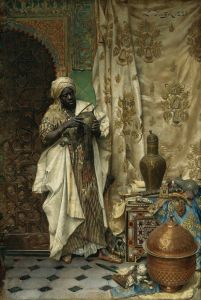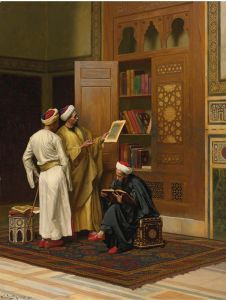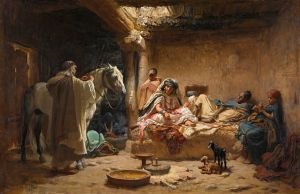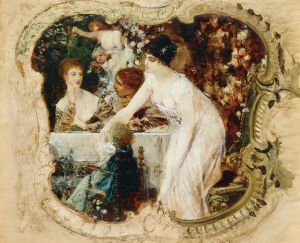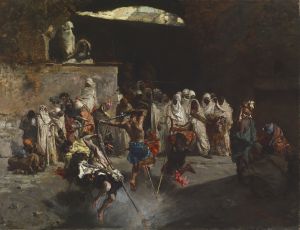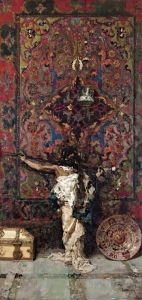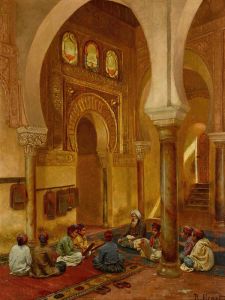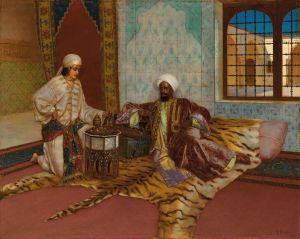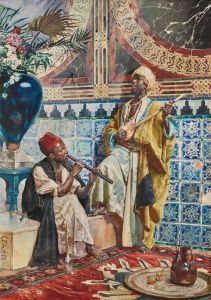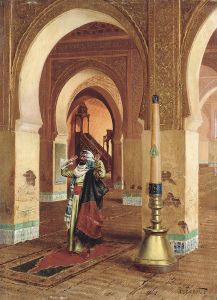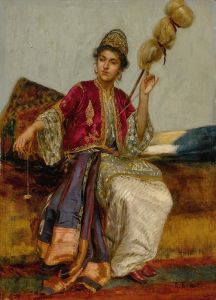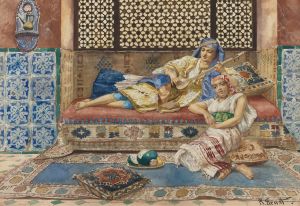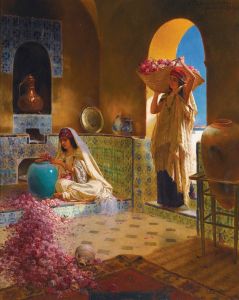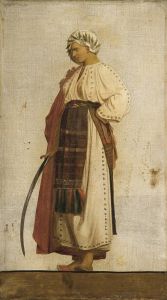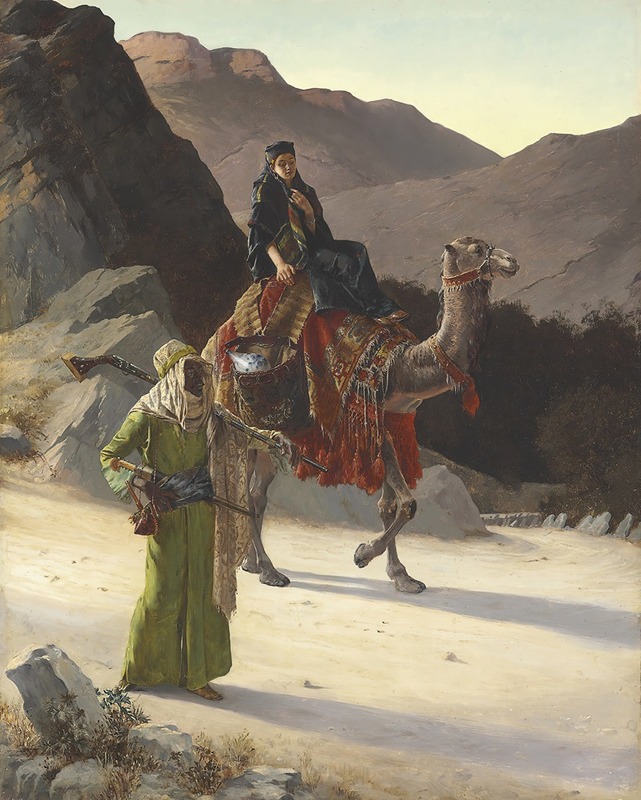
L’Escorte
A hand-painted replica of Rudolf Ernst’s masterpiece L’Escorte, meticulously crafted by professional artists to capture the true essence of the original. Each piece is created with museum-quality canvas and rare mineral pigments, carefully painted by experienced artists with delicate brushstrokes and rich, layered colors to perfectly recreate the texture of the original artwork. Unlike machine-printed reproductions, this hand-painted version brings the painting to life, infused with the artist’s emotions and skill in every stroke. Whether for personal collection or home decoration, it instantly elevates the artistic atmosphere of any space.
Rudolf Ernst, an Austrian painter born in 1854, was known for his detailed and vibrant depictions of Orientalist themes. His works often portrayed scenes inspired by the Middle East, North Africa, and the Ottoman Empire, reflecting the 19th-century European fascination with these regions. Ernst's paintings are characterized by their meticulous attention to detail, rich textures, and vivid colors, often featuring architectural elements, textiles, and figures in traditional attire.
One of his notable works, L’Escorte, exemplifies his mastery of the Orientalist genre. The painting depicts a group of figures in an exotic setting, likely inspired by Ernst's imagination and his exposure to Orientalist motifs rather than direct observation. The scene is rendered with precision, showcasing Ernst's skill in capturing intricate patterns, luxurious fabrics, and the interplay of light and shadow. The title, which translates to "The Escort," suggests a narrative involving a group of individuals, possibly guards or attendants, accompanying a central figure or traveling through a specific locale. However, the exact context or story behind the painting is not documented.
Ernst's work, including L’Escorte, reflects the broader 19th-century European interest in Orientalism, a movement that romanticized and idealized the cultures and landscapes of the East. While these works are celebrated for their artistic quality, they are also critiqued for perpetuating stereotypes and presenting a Westernized interpretation of Eastern cultures. Ernst's paintings, like those of many Orientalist artists, were shaped by a combination of travel accounts, photographs, and his own imagination, rather than firsthand experience of the regions he depicted.
Today, L’Escorte is appreciated for its technical brilliance and as a representation of the Orientalist art movement. It serves as an example of how 19th-century European artists engaged with and interpreted non-European cultures, offering insights into the artistic and cultural dynamics of the period. However, specific details about the painting's creation, provenance, and current location are not widely documented.





